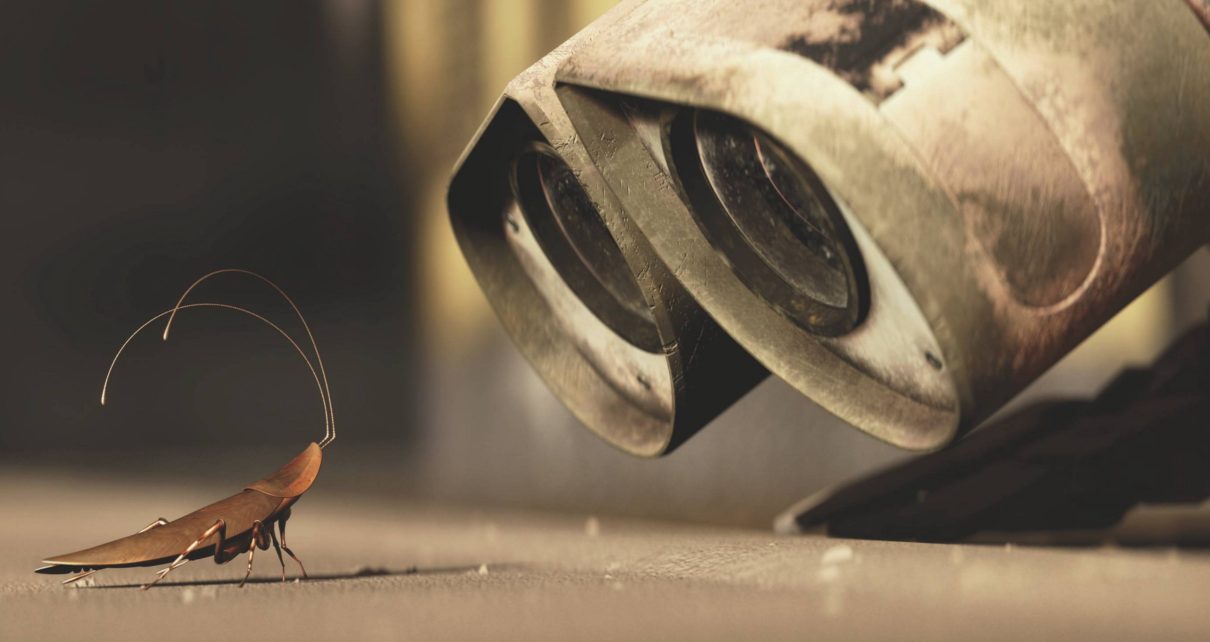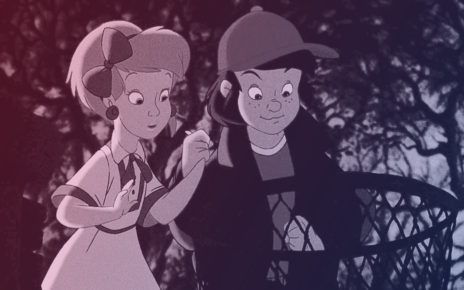Note: Hours after this story was published, the Dept. of Justice approved Disney’s $71 billion bid to buy Fox. Just saying. -Eds.
Corporations, man. The government says they’re people, leftists say they’re evil, our president says they deserve tax breaks, and I think the one that settled a lawsuit over water pollution, doesn’t pay its employees a living wage, and has a mascot who comes off like a sexual predator may just have created the best anti-corporate, pro-environmentalism, socialist movie about a robot in love that I’ve ever seen.
Ten years ago today, Disney — under the Pixar brand, which it acquired in 2005 — released my all time favorite movie, Wall-E: the story of a robot (the titular Wall-E) who is not only the lone remaining Waste Allocation Load Lifter-Earth Class robot on Earth, but is in fact the only sentient being left on Earth save for a friendly cockroach. Wall-E’s function in the universe is simple: clean up the garbage humans have allowed to pile up so much that they were forced to leave Earth in favor of floating around in space in cruise-ship-like starcraft waiting for Earth to be habitable again. Wall-E’s loneliness on Earth is reinforced by the wide shots of a vast abandoned planet, punctuated by stores, billboards, and advertisements (including a brief, expository video) that don the red “BnL” logo of Buy ‘n’ Large, the corporation that cornered the market in retail, wholesale, robot building, spaceship building, spaceship captaining, and planning for the future of the human race.
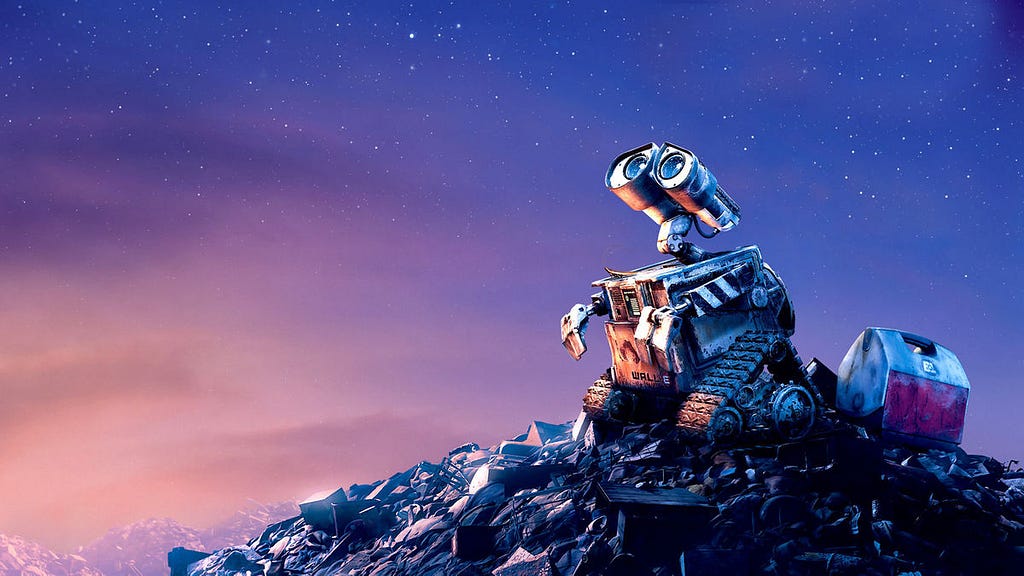
Wall-E is dialogue-free for its first 22 minutes, until, after 700 years in Wall-E time, the BnL-owned spaceship Axiom sends one of their Extraterrestrial Vegetation Evaluator (Eve) robots to search for vegetation. Wall-E, having been alone for 700 years immediately becomes smitten with Eve, a modern, sleek robot modeled after the iPod (Steve Jobs was the once-chairman and majority stakeholder in Pixar. His other company, Apple, is reported to currently be holding over $200 billion in cash. They’ve just received a tax break.)
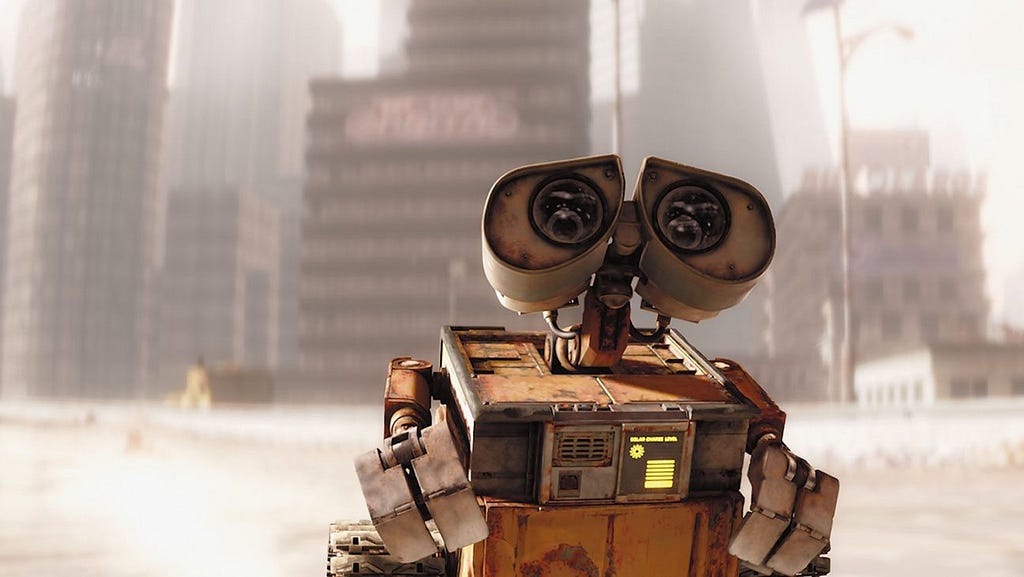
Wall-E accidentally gets dragged along for the ride once Eve finds a tiny plant that he discovered on Earth, and when she is picked up by the Axiom for further evaluation, we get to see the corporation’s chokehold on mankind. In the future, humans are tiny-boned, fat blobs that spend their days in floating chairs with their faces in screens, eating meals out of cups, kept fat and happy. This future society, as we eventually learn, is acting on the wishes of the long-deceased BnL corporate overlords who have programmed the ship to never return to Earth, by any means necessary, including the gaslighting of humanity. Much of film’s tension spins out of the cover up of the existence of the plant that Eve and Wall-E found, which should have otherwise been the catalyst for an exodus back to our home planet. (There’s an eventual happy ending, involving the humans rising up to support the robots, and several instances of me crying over devotion, beauty, and love’s power to save the world.)
Who better to talk about the existential threat to humanity that multi-trillion-dollar conglomerates can pose than Disney?
Predictably, not everyone was cool with the idea of runaway capitalism essentially destroying human society. The notion that an evil corporation polluted Earth so bad that humanity had to escape, only to be taught moral lessons by cute robots in love, didn’t sit well with right-leaning media, and criticism was swift and wide-spread upon the film’s release. The A.V. Club rounded up much of the backlash, which included claims of the film supporting “liberal fascism,” fighting a “war on modernity,” and being “prejudiced against fat people.”
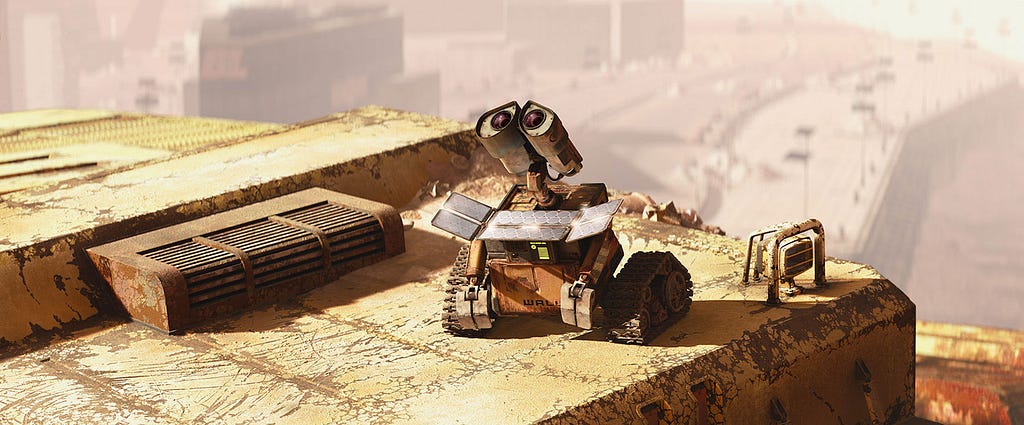
And why shouldn’t we turn to our corporations for this liberal propaganda? Particularly a corporation like Disney, which at the time of release—as the National Review (as referenced in the The A.V. Club article) pointed out—“want[ed] us to buy Wall-E kitsch for our kids that are manufactured in China at environment-destroying factories and packed in plastic that will take hundreds of year to biodegrade.”
And if Disney’s release of Wall-E read to critics as some sly critique of capitalism, the company’s actions have never reflected the sentiment. In the years since Wall-E debuted, Disney has acquired retailers, television stations, brands like Star Wars, Marvel, and The Muppets, and just won a bidding war against Comcast to purchase 20th Century Fox for $71.3 billion. And maybe it’s for those very reasons that Wall-E is so perfect: who better to talk about the existential threat to humanity that multi-trillion-dollar conglomerates can pose than Disney? As long as it’s beautiful and the robots make me cry, there’s really nothing better than authenticity.
Thanks for reading The Dot and Line, where we talk about animation of all kinds. Don’t forget to for this article and follow us on Twitter and Facebook.


